Neurology
- Page Path
-
- HOME
- TOPICS
- Neurology
- Topics
-
- Adolescence Medicine (3)
- Allergy (52)
- Cardiology (76)
- Critical Care Medicine (8)
- Developmental and Behavioral Medicine (17)
- Emergency Medicine (5)
- Endocrinology (51)
- Gastroenterology (57)
- General Pediatrics (37)
- Genetics and Metabolism (20)
- Hematology (11)
- Immunology (12)
- Infection (66)
- Neonatology (Perinatology) (103)
- Nephrology (Genitourinary) (49)
- Neurology (88)
- Nutrition (25)
- Oncology (15)
- Neurobehavior (11)
- Pulmonology (25)
- Rheumatology (2)
- Other (28)
- Review Article
- Neurology
- Health effects of electromagnetic fields on children
- Jin-Hwa Moon
- Clin Exp Pediatr. 2020;63(11):422-428. Published online May 26, 2020
-
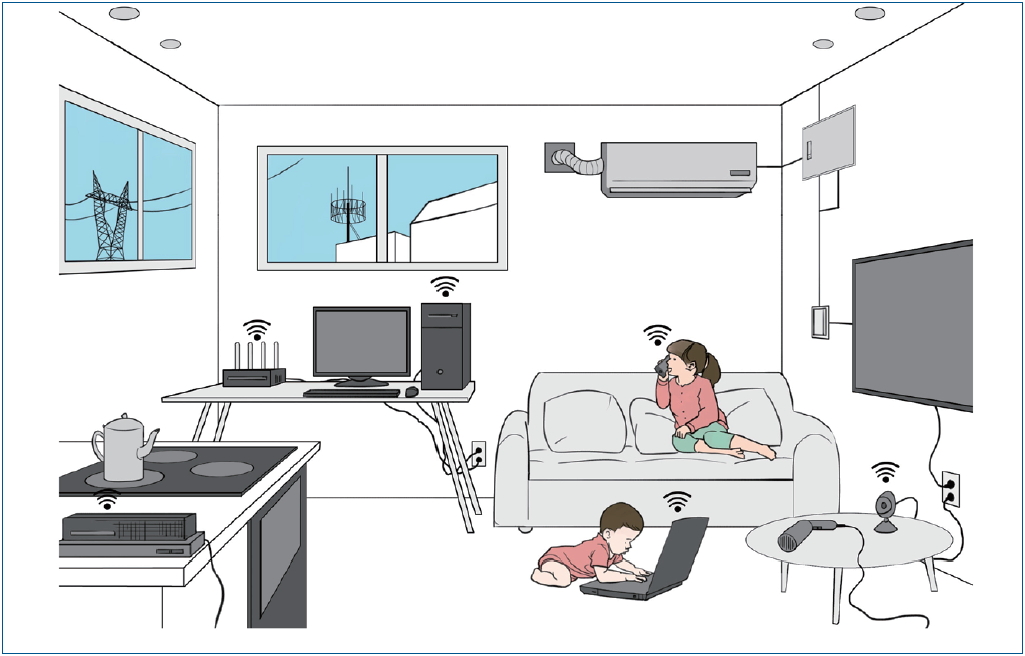
· The nervous systems of children are more vulnerable to the effects of electromagnetic waves than adults.
· The exposure to electromagnetic fields (EMFs) among children should be minimized.
· According to International Agency for Research on Cancer EMFs are possibly carcinogenic, it should not be overlooked or interpreted with bias.
- Editorial
- Neurology
- Commentary on "Autoimmune encephalitis and epilepsy: evolving definition and clinical spectrum"
- Jieun Choi
- Clin Exp Pediatr. 2020;63(8):310-311. Published online August 15, 2020
-
- Review Article
- Neurology
- Autoimmune encephalitis and epilepsy: evolving definition and clinical spectrum
- Joo Hee Seo, Yun-Jin Lee, Ki Hyeong Lee, Elakkat Gireesh, Holly Skinner, Michael Westerveld
- Clin Exp Pediatr. 2020;63(8):291-300. Published online August 16, 2019
-
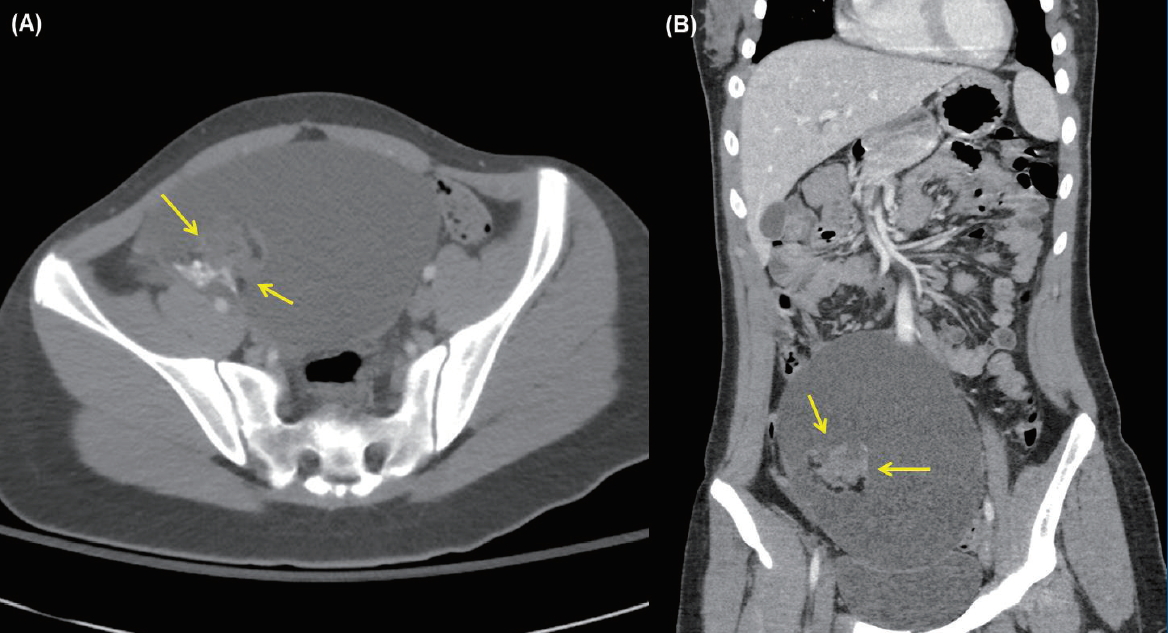
Advances in autoimmune encephalitis studies in the past 10 years have led to the identification of new syndromes and biomarkers that have transformed the diagnostic approach to the disorder. The disorder or syndrome has been linked to a wide variety of pathologic processes associated with the neuron-specific autoantibodies targeting intracellular and plasma membrane antigens. However, current criteria for autoimmune encephalitis...
- Editorial
- Neurology
- Next-generation sequencing is a powerful method to enhance diagnostic yield in global developmental delay/intellectual disability
- Jon Soo Kim
- Clin Exp Pediatr. 2020;63(6):211-212. Published online June 11, 2020
-
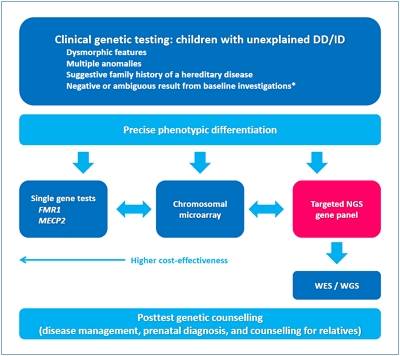
- Review Article
- Neurology
- Genetic tests by next-generation sequencing in children with developmental delay and/or intellectual disability
- Ji Yoon Han, In Goo Lee
- Clin Exp Pediatr. 2020;63(6):195-202. Published online November 4, 2019
-

Developments in next-generation sequencing (NGS) techogies have assisted in clarifying the diagnosis and treatment of developmental delay/intellectual disability (DD/ID) via molecular genetic testing. Advances in DNA sequencing technology have not only allowed the evolution of targeted panels but also, and more currently enabled genome-wide analyses to progress from research era to clinical practice. Broad acceptance of accuracy- guided targeted gene...
- Editorial
- Neurology
- Targeted temperature management and neuroprotective outcomes of pediatric patients after cardiac arrest
- Yun-Jin Lee
- Clin Exp Pediatr. 2020;63(5):180-181. Published online April 14, 2020
-
- Review Article
- Neurology
- Factors associated with seizure and cognitive outcomes after epilepsy surgery for low-grade epilepsy-associated neuroepithelial tumors in children
- Ara Ko, Joon Soo Lee
- Clin Exp Pediatr. 2020;63(5):171-177. Published online November 13, 2019
-

Low-grade epilepsy-associated neuroepithelial tumors (LEATs) are responsible for drug-resistant chronic focal epilepsy, and are the second-most common reason for epilepsy surgery in children. LEATs are extremely responsive to surgical treatment, and therefore epilepsy surgery should be considered as a treatment option for LEATs. However, the optimal time for surgery remains controversial, and surgeries are often delayed. In this review, we...
- How can neurological outcomes be predicted in comatose pediatric patients after out-of-hospital cardiac arrest?
- Hyo Jeong Kim
- Clin Exp Pediatr. 2020;63(5):164-170. Published online October 10, 2019
-

The prognosis of patients who are comatose after resuscitation remains uncertain. The accurate prediction of neurological outcome is important for management decisions and counseling. A neurological examination is an important factor for prognostication, but widely used sedatives alter the neurological examination and delay the response recovery. Additional studies including electroencephalography, somatosensory-evoked potentials, brain imaging, and blood biomarkers are useful for...
- Editorial
- Neurology
- Guideline for advanced neuroimaging in pediatric epilepsy
- Yun Jung Hur
- Clin Exp Pediatr. 2020;63(3):100-101. Published online March 6, 2020
-
- Review Article
- Neurology
- Advanced neuroimaging techniques for evaluating pediatric epilepsy
- Yun Jeong Lee
- Clin Exp Pediatr. 2020;63(3):88-95. Published online February 6, 2020
-

Accurate localization of the seizure onset zone is important for better seizure outcomes and preventing deficits following epilepsy surgery. Recent advances in neuroimaging techniques have increased our understanding of the underlying etiology and improved our ability to noninvasively identify the seizure onset zone. Using epilepsy-specific magnetic resonance imaging (MRI) protocols, structural MRI allows better detection of the seizure onset zone,...
- Original Article
- Neurology
- Evaluation of hematologic profile may be needed for patients treated with oxcarbazepine
- Gu Hyun Jung, Su Jeong You
- Clin Exp Pediatr. 2019;62(8):312-316. Published online April 11, 2019
-

Purpose: The major side effects of treatment with oxcarbazepine (OXC) are skin rash and hyponatremia. Hematologic side effects are reported rarely. The aim of this study was to investigate the rate and types of the hematologic side effects of OXC. Methods: The medical records of 184 patients diagnosed with epilepsy or movement disorder and on OXC monotherapy, at the Department of...
- Correlation of serum S100B levels with brain magnetic resonance imaging abnormalities in children with status epilepticus
- Prastiya Indra Gunawan, Darto Saharso, Dian Purnama Sari
- Clin Exp Pediatr. 2019;62(7):281-285. Published online May 8, 2019
-
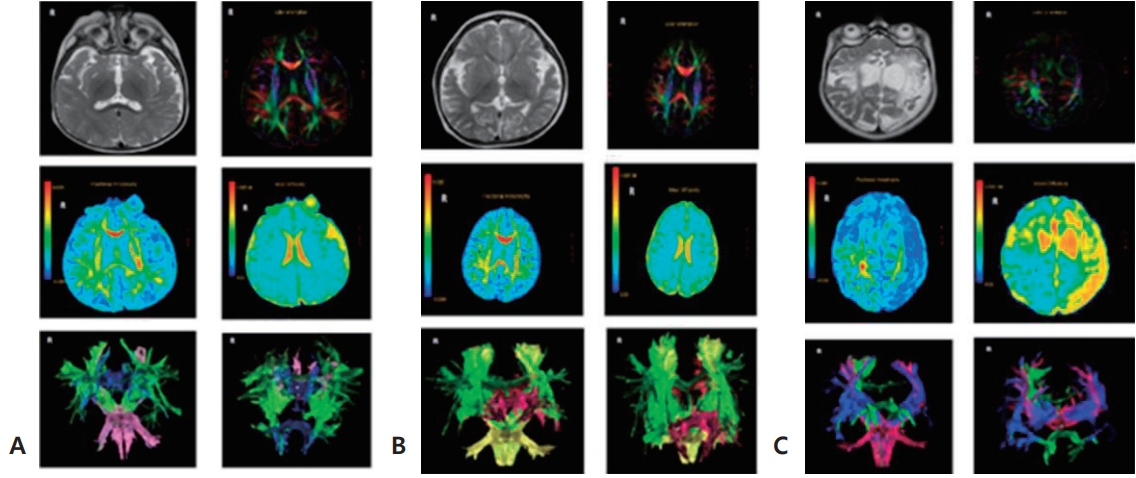
Purpose: To evaluate the association between elevated S100B levels with brain tissue damage seen in abnormalities of head magnetic resonance imaging (MRI; diffusion tensor imaging [DTI] sequence) in patients with status epilepticus (SE). Methods: An analytical observational study was conducted in children hospitalized at Dr Soetomo Hospital, Surabaya, from July to December 2016. The patients were divided into 2 groups: SE...
- Efficacy and tolerability of adjunctive perampanel treatment in children under 12 years of age with refractory epilepsy
- Yuni Yun, Dongsub Kim, Yun-Jeong Lee, Soonhak Kwon, Su-Kyeong Hwang
- Clin Exp Pediatr. 2019;62(7):269-273. Published online December 26, 2018
-

Purpose: There is limited data on the use of perampanel in children under 12 years of age. We evaluated the efficacy and tolerability of adjunctive perampanel treatment in children under 12 years of age with refractory epilepsy. Methods: This retrospective observational study was performed in Kyungpook National University Hospital from July 2016 to March 2018. A responder was defined as a...
- Editorial
- Neurology
- Perampanel is also a useful adjunctive treatment option in refractory epilepsy in children
- Jon Soo Kim, Won Seop Kim
- Clin Exp Pediatr. 2019;62(7):259-260. Published online March 5, 2019
-
- Case Report
- Neurology
- A long-term subacute sclerosing panencephalitis survivor treated with intraventricular interferon-alpha for 13 years
- Minsun Kwak, Hye-Ryun Yeh, Mi-Sun Yum, Hyun-Jin Kim, Su Jeong You, Tae-Sung Ko
- Clin Exp Pediatr. 2019;62(3):108-112. Published online September 18, 2018
-
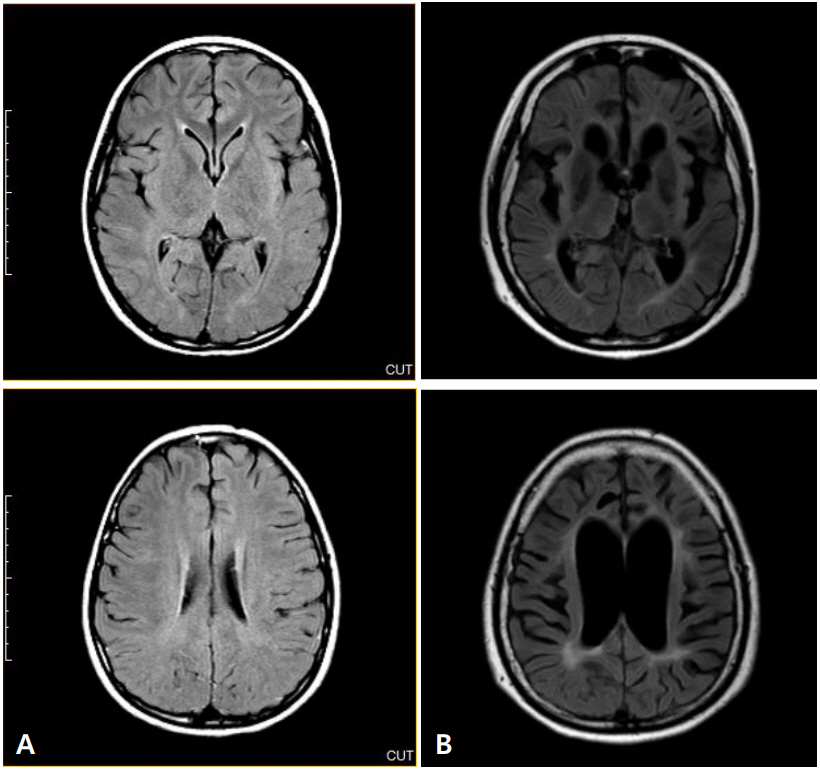
Subacute sclerosing panencephalitis (SSPE) is a rare, progressive, and fatal central nervous system disorder resulting from persistent measles virus infection. Long-term data are scarce, with a maximum follow-up period of 10 years. Interferon-alpha (IFN-α) is a protein that exerts its antiviral activity via enhancement of cellular immune response and is reported to be an effective drug for the treatment of...
- Original Article
- Neurology
- Genotype-phenotype correlations in pediatric patients with myotonic dystrophy type 1
- Hyeong Jung Kim, Ji-Hoon Na, Young-Mock Lee
- Clin Exp Pediatr. 2019;62(2):55-61. Published online September 23, 2018
-
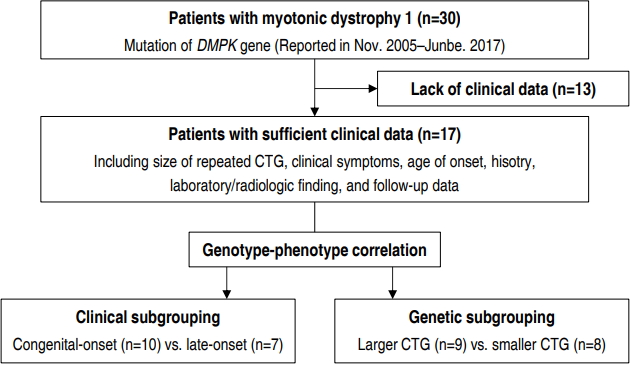
Purpose: Myotonic dystrophy, also known as dystrophia myotonica (DM), is an autosomal dominant disorder with 2 genetically distinct forms. DM type 1 (DM1) is the more common form and is caused by abnormal expansion of cytosine/thymine/guanine (CTG) repeats in the DM protein kinase (DMPK ) gene. Our study aimed to determine whether the age of onset is correlated with CTG...
- The clinical characteristics and prognosis of subgaleal hemorrhage in newborn
- Sun Jin Lee, Jin Kyu Kim, Sun Jun Kim
- Clin Exp Pediatr. 2018;61(12):387-391. Published online September 16, 2018
-
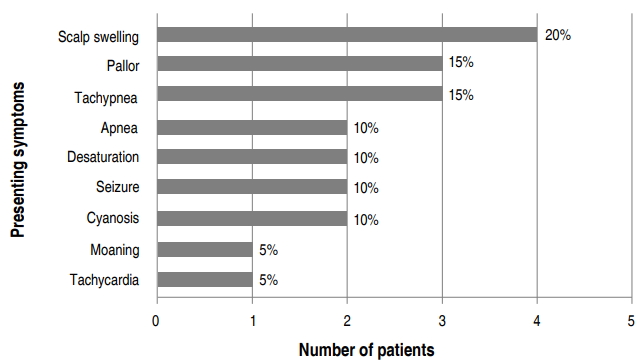
Purpose: Subgaleal hemorrhage (SGH) is a rare but potentially fatal condition in newborns; however, few studies have reported on this condition. We aimed to identify the clinical characteristics and prognostic factors of SGH. Methods: We retrospectively reviewed the medical records of 20 neonates diagnosed with SGH between January 2000 and June 2017. Enrolled neonates were clinically diagnosed when they had tender...
- Clinical manifestations of headache in children younger than 7 years
- Bu Seon Kang, Jinsun Lee, Jin Hyuk Choi, Hyeok Hee Kwon, Joon Won Kang
- Clin Exp Pediatr. 2018;61(11):355-361. Published online September 16, 2018
-

Purpose: Headache is a common symptom during childhood. It is usually persistent and requires special care. This study aimed to identify the characteristics of headache in children <7 years of age. Methods: We reviewed 3 years of clinical files on children <7 years of age with a chief complaint of headache. Results: This study included 146 children (66 males, 80 females; mean...
- Comparison of conservative therapy and steroid therapy for Bell’s palsy in children
- Hye Won Yoo, Lira Yoon, Hye Young Kim, Min Jung Kwak, Kyung Hee Park, Mi Hye Bae, Yunjin Lee, Sang Ook Nam, Young Mi Kim
- Clin Exp Pediatr. 2018;61(10):332-337. Published online September 12, 2018
-

Purpose: Bell’s palsy is characterized by sudden onset of unilateral facial weakness. The use of corticosteroids for childhood Bell’s palsy is controversial. This study aimed to identify clinical characteristics, etiology, and laboratory findings in childhood Bell’s palsy, and to evaluate the efficacy of corticosteroid treatment. Methods: We conducted a retrospective analysis of children under 19 years of age treated for Bell’s...
- Outcome of ultrasonographic imaging in infants with sacral dimple
- Jin Hyuk Choi, Taekwan Lee, Hyeok Hee Kwon, Sun Kyoung You, Joon Won Kang
- Clin Exp Pediatr. 2018;61(6):194-199. Published online June 25, 2018
-
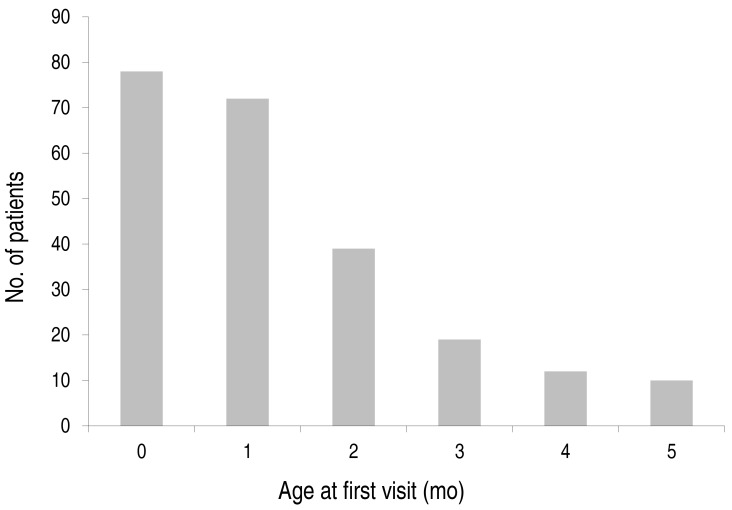
Purpose Sacral dimples are a common cutaneous anomaly in infants. Spine ultrasonography (USG) is an effective and safe screening tool for patients with a sacral dimple. The aim of this study was to determine the clinical manifestations in patients with an isolated sacral dimple and to review the management of spinal cord abnormalities identified with USG.
Methods We reviewed clinical records and collected...
- Long-term prenatal stress increases susceptibility of N-methyl-D-aspartic acid-induced spasms in infant rats
- Hyeok Hee Kwon, Taekwan Lee, Jinpyo Hong, Dong Woon Kim, Joon Won Kang
- Clin Exp Pediatr. 2018;61(5):150-155. Published online May 28, 2018
-

Purpose Infantile spasms, also known as West syndrome, is an age-specific epileptic seizure. Most patients with this condition also exhibit delayed development. This study aimed to determine the effect of long-term prenatal stress on susceptibility to infantile spasms.
Methods We subjected pregnant rats to acute or chronic immobilization stress. Resulting offspring received N-methyl-D-aspartic acid (15 mg/kg, intraperitoneally) on postnatal day 15, and their...
- Review Article
- Neurology
- Epilepsy syndromes during the first year of life and the usefulness of an epilepsy gene panel
- Eun Hye Lee
- Clin Exp Pediatr. 2018;61(4):101-107. Published online April 23, 2018
-

Recent advances in genetics have determined that a number of epilepsy syndromes that occur in the first year of life are associated with genetic etiologies. These syndromes range from benign familial epilepsy syndromes to early-onset epileptic encephalopathies that lead to poor prognoses and severe psychomotor retardation. An early genetic diagnosis can save time and overall cost by reducing the amount...
- Case Report
- Neurology
- Mild encephalopathy with a reversible splenial lesion in a girl with acute pyelonephritis
- Jung Sook Yeom, Chung Mo Koo, Ji Sook Park, Ji-Hyun Seo, Eun Sil Park, Jae-Young Lim, Hyang-Ok Woo, Hee-Shang Youn
- Clin Exp Pediatr. 2018;61(2):64-67. Published online February 28, 2018
-
We report the case of a 12-year-old girl who had mild encephalopathy with a reversible splenial lesion (MERS) associated with acutepyelonephritis caused by
Escherichia coli . The patient was admitted with a high fever, and she was diagnosed with acute pyelonephritis based on pyuria and the results of urine culture, which detected cefotaxime-sensitiveE. coli . Although intravenous cefotaxime and tobramycin were...
- Original Article
- Neurology
- Serum neuron specific enolase is increased in pediatric acute encephalitis syndrome
- Dian Pratamastuti, Prastiya Indra Gunawan, Darto Saharso
- Clin Exp Pediatr. 2017;60(9):302-306. Published online September 21, 2017
-
Purpose This study aimed to investigate whether serum neuron-specific enolase (NSE) was expressed in acute encephalitis syndrome (AES) that causes neuronal damage in children.
Methods This prospective observational study was conducted in the pediatric neurology ward of Soetomo Hospital. Cases of AES with ages ranging from 1 month to 12 years were included. Cases that were categorized as simple and complex febrile seizures...
- Clinical characteristics of hypertensive encephalopathy in pediatric patients
- Chang Hoon Ahn, Seung-A Han, Young Hwa Kong, Sun Jun Kim
- Clin Exp Pediatr. 2017;60(8):266-271. Published online August 14, 2017
-
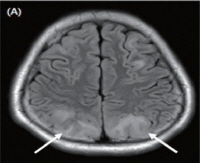
Purpose The aim of this study was to assess the clinical characteristics of hypertensive encephalopathy according to the underlying etiologies in children.
Methods We retrospectively evaluated 33 pediatric patients who were diagnosed as having hypertensive encephalopathy in Chonbuk National University Children's Hospital. Among the patients, 18 were excluded because of incomplete data or because brain magnetic resonance imaging (MRI) was not performed. Finally,...
- Effects of low-dose topiramate on language function in children with migraine
- Seung-A Han, Eu Jeen Yang, Younghwa Kong, Chan-Uhng Joo, Sun Jun Kim
- Clin Exp Pediatr. 2017;60(7):227-231. Published online July 31, 2017
-
Purpose This study aimed to verify the safety of low-dose topiramate on language development in pediatric patients with migraine.
Methods Thirty newly diagnosed pediatric patients with migraine who needed topiramate were enrolled and assessed twice with standard language tests, including the Test of Language Problem Solving Abilities (TOPs), Receptive and Expressive Vocabulary Test, Urimal Test of Articulation and Phonology, and computerized speech laboratory...
- Effects of lamotrigine on attention-deficit hyperactivity disorder in pediatric epilepsy patients
- Seung-A Han, Eu Jeen Yang, Mi-Kyoung Song, Sun Jun Kim
- Clin Exp Pediatr. 2017;60(6):189-195. Published online June 22, 2017
-
Purpose The purpose of this study was to investigate the effects of lamotrigine for the treatment of attention-deficit hyperactivity disorder (ADHD) symptoms in children with epilepsy.
Methods Pediatric patients newly diagnosed with epilepsy (n=90 [61 boys and 29 girls]; mean age, 9.1±3.4 years) were enrolled. All patients were evaluated with the Korean ADHD rating scale (K-ARS)-IV before treatment with lamotrigine and after doses...
- Review Article
- Neurology
- Malformations of cortical development: genetic mechanisms and diagnostic approach
- Jeehun Lee
- Clin Exp Pediatr. 2017;60(1):1-9. Published online January 31, 2017
-
Malformations of cortical development are rare congenital anomalies of the cerebral cortex, wherein patients present with intractable epilepsy and various degrees of developmental delay. Cases show a spectrum of anomalous cortical formations with diverse anatomic and morphological abnormalities, a variety of genetic causes, and different clinical presentations. Brain magnetic resonance imaging has been of great help in determining the exact...
- Original Article
- Neurology
- Single-center experience of the Korean-Developmental Screening Test for infants and children
- Chae-Ri Suh, Su Ye Sohn, Gun-Ha Kim, Seong-Kwan Jung, Baik-Lin Eun
- Clin Exp Pediatr. 2016;59(12):483-489. Published online December 31, 2016
-
Purpose We investigated the number of test takers of the Korean-Developmental Screening Test (K-DST) in a single children's hospital within a year, according to age, referral rate, and follow-up percentage.
Methods For this study, 4,062 children who visited and received K-DST at Woorisoa Children's Hospital between January and December 2015 were enrolled. Seven test sets were used according to the Korean National Health...
- Prognostic factors of neurological outcomes in late-preterm and term infants with perinatal asphyxia
- Sun Young Seo, Gyu Hong Shim, Myoung Jae Chey, Su Jeong You
- Clin Exp Pediatr. 2016;59(11):440-445. Published online November 18, 2016
-
Purpose This study aimed to identify prognostic factors of neurological outcomes, including developmental delay, cerebral palsy and epilepsy in late-preterm and term infants with perinatal asphyxia.
Methods All late-preterm and term infants with perinatal asphyxia or hypoxic-ischemic insults who admitted the neonatal intensive care unit of Inje University Sanggye Paik Hospital between 2006 and 2014 and were followed up for at least 2...
-

-
-

-

-
Impact Factor4.2
-
6.52022CiteScore92nd percentilePowered by







